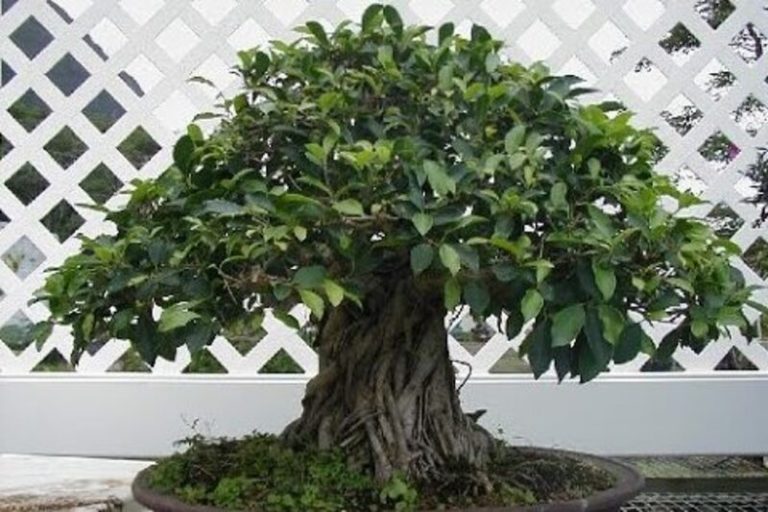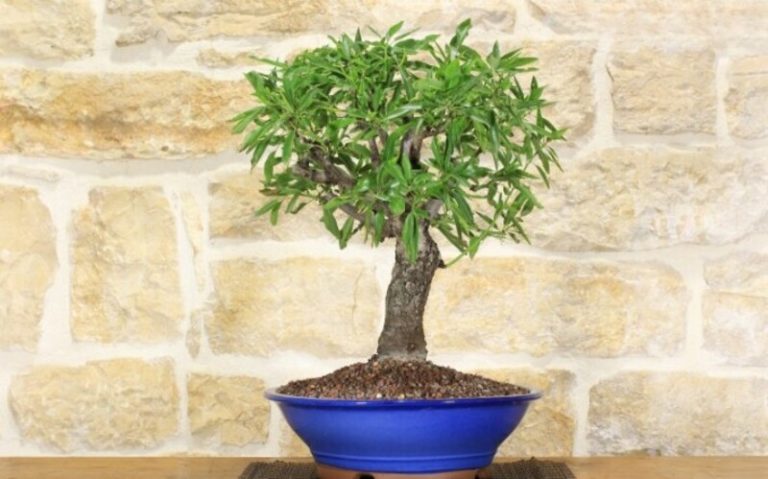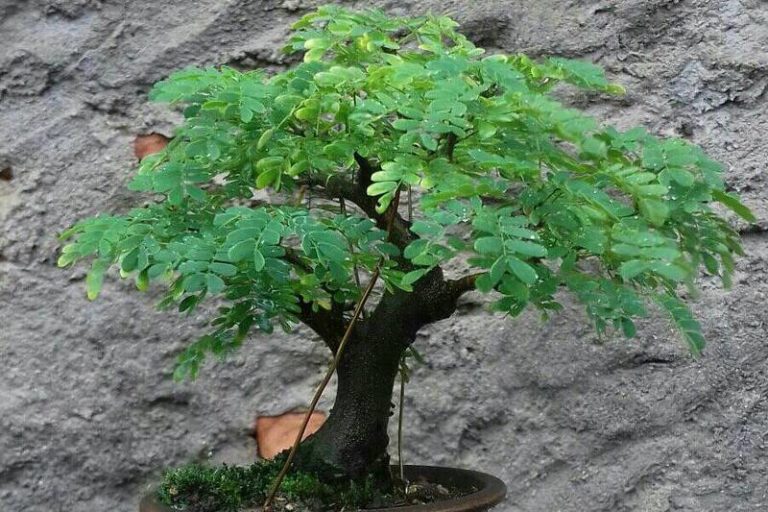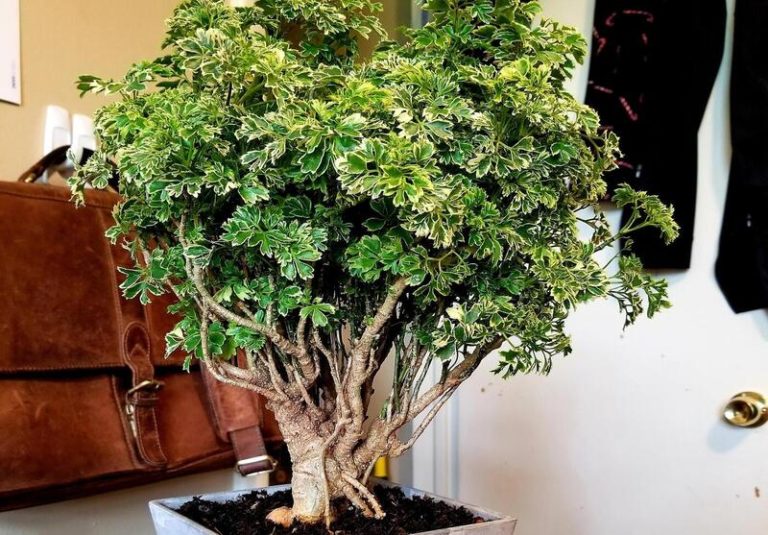Royal Poinciana Bonsai: The stunning tree that makes a perfect bonsai
Little trees called Royal Poinciana Bonsai are grown for their aesthetic appeal and beauty. It is a scaled-down version of the Royal Poinciana tree, which is renowned for its vibrant red-orange flowers. Little trees are planted in tiny pots or containers for the Japanese art form of bonsai.
What is Royal Poinciana Bonsai?
The Royal Poinciana tree, which is also called the flame tree or Delonix regia, is famous for its bright orange-red flowers. Growing and training in the art of bonsai, a Royal Poinciana Bonsai is a small version of this tree. Bonsai is a Japanese art form that involves growing and shaping small trees in pots. For the Royal Poinciana Bonsai, the tree would need to be carefully pruned and shaped to keep its small size while keeping the Royal Poinciana’s unique features, like its fern-like leaves and beautiful flowers.
How to Grow a Royal Poinciana Bonsai
The easy-to-grow Royal Poinciana Bonsai is a wonderful addition to any collection. It may be beneficial and pleasurable to grow a Royal Poinciana bonsai.
These are some instructions for growing a Royal Poinciana Bonsai successfully:
1. Choose the right location: In order to thrive, Royal Poinciana Bonsai needs a warm, humid temperature similar to its natural tropical areas. It has to be cultivated in a place that gets a lot of sunshine yet is shielded from high winds.
2. Choose the right soil: Royal Poinciana bonsai need a soil mix made of peat moss, sand, and perlite that drains well. Keep the soil moist, but not so wet that it won’t drain.
3. Watering: The tree should be watered regularly, especially during the hot summer months. It is important not to overwater the tree, as this can cause root rot.
4. Fertilization: A balanced fertilizer should be used once a month during the growing season to keep the tree healthy.
5. Pruning: Pruning is important to keep the tree healthy and give it the shape you want. Make sure to prune the tree often to get rid of dead branches, encourage new growth, and keep its shape.
6. Wiring: To give the tree a distinctive and attractive appearance, the branches and trunk can be gently shaped with wire.
7. Repotting: Repot the tree every 2–3 years to ensure that it has enough space to grow. Use a soil mix similar to the one used when the tree was originally planted.
8. Protection from pests and diseases: Inspect the tree regularly for pests and diseases and take appropriate measures to protect the tree, such as using pesticides or fungicides.
If you give your Royal Poinciana Bonsai the care and attention it needs, it can live for many years and give you beauty and ideas.
Unique characteristics of Royal Poinciana bonsai
The Royal Poinciana bonsai is a lovely and unusual tree with several distinctive characteristics, including:
A. Striking flowers: Beautiful red or orange blossoms on the Royal Poinciana bonsai appear in the spring and summer. The big and magnificent flowers have a unique shape that contributes to the tree’s overall beauty.
B. Beautiful bark: The bark of a Royal Poinciana bonsai is wrinkle-free, a dark brown color, and has a distinctly different feel. As the tree ages, the bark develops deep ridges and fissures, which add to its unique character and contribute to its overall attractiveness.
C. Flared base: The Royal Poinciana bonsai has a broad, flared base that tapers upward to the tree’s crown. This distinctive form elevates the tree’s appearance and distinguishes it from other bonsai species.
D. Feathery leaves: The vivid green feathery and fern-like foliage of the Royal Poinciana bonsai contrasts wonderfully with the tree’s colorful blooms.
E. Drought tolerance: The Royal Poinciana bonsai is very resistant to drought and may survive for extended periods without water, making it a durable and low-maintenance tree species.
The Royal Poinciana bonsai is a magnificent and distinctive tree species that is appreciated for its brilliant blossoms, lovely bark, flared base, feathery leaves, and tolerance for dryness. The Royal Poinciana bonsai can be cultivated as an ornamental addition to a garden or as a challenging but rewarding bonsai endeavor. Nonetheless, it is certain to impress and please.
Styling Royal Poinciana Bonsai
You must shape the tree to give it a distinctive and appealing appearance if you want to style a Royal Poinciana Bonsai. The following methods can be used to style a Royal Poinciana Bonsai:
- Wiring: Wiring is a method for carefully shaping the tree’s branches and trunk. Little wires are wrapped around the tree’s branches and trunk to bend them in a certain direction. Once the desired form has been achieved, the wires should be removed.
- Pruning: Pruning is the process of removing branches and leaves to create a more compact and polished look. To remove undesirable branches and leaves, use sharp and clean pruning shears.
- Leaf trimming: The process of strategically removing leaves from a tree in order to promote new growth and enhance its overall look. To make the tree appear more proportional and to reveal its structure, remove the big leaves.
- Branch placement: Consider branch positioning while styling a Royal Poinciana bonsai. The branches should ideally be positioned in a way that gives a balanced and visually pleasant look. Consider the tree’s natural form and development pattern while placing the branches.
- Tree height: Decide the ideal tree height and trim the trunk accordingly. The tree’s height should be proportional to the size of the container, and neither too short nor too tall.
A Royal Poinciana Bonsai, with the appropriate care and attention, may develop into a stunning and original tree.
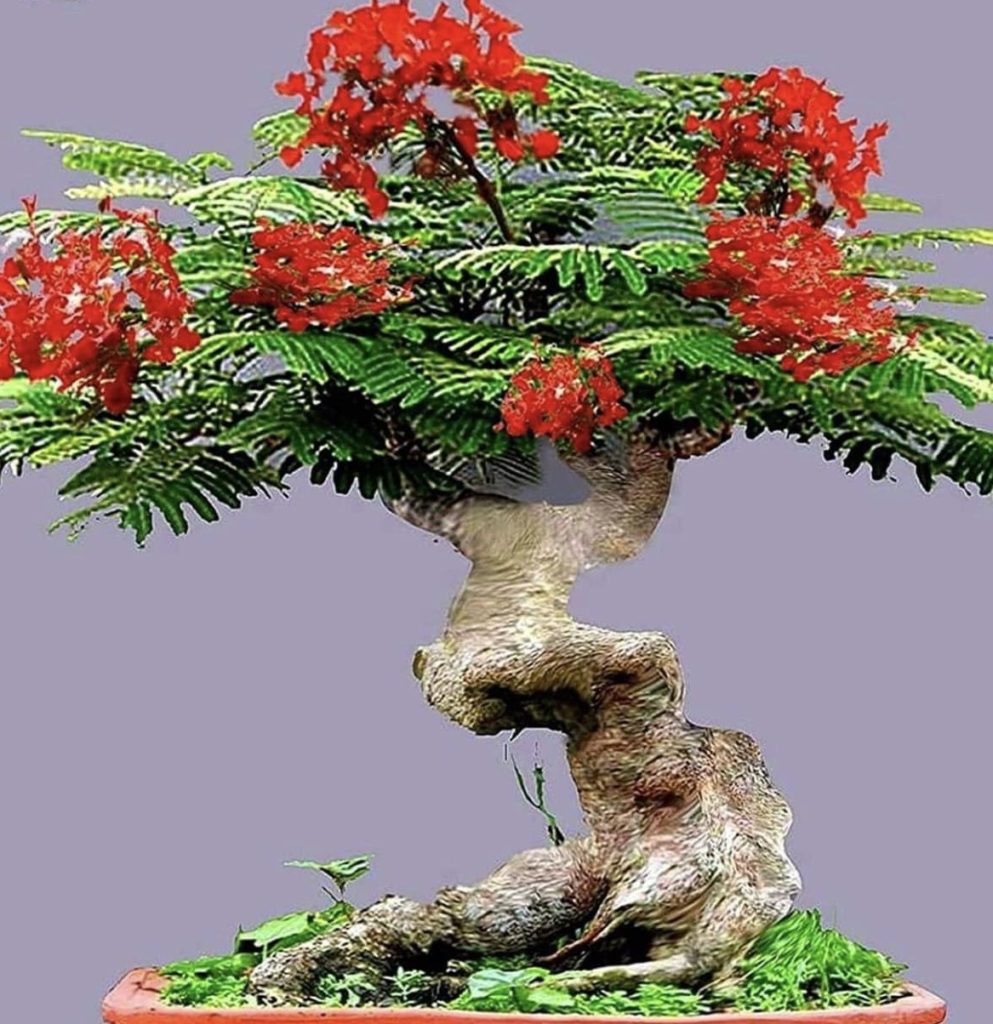
Care and Maintenance of Royal Poinciana Bonsai
If you want a Royal Poinciana Bonsai tree to grow and stay healthy, you need to take care of it and keep it in good shape. Here are some tips on how to care for and keep a Royal Poinciana Bonsai in good shape:
- Fertilization: A Royal Poinciana Bonsai requires regular care and attention to ensure its continued growth and health. Keeping a Royal Poinciana Bonsai healthy and beautiful requires the following attentions:
- Soil: Use well-draining soil that is rich in organic matter. Royal Poinciana Bonsai prefers slightly acidic soil, with a pH range of 5.5 to 6.5. Repot the tree every 2-3 years to ensure that it has enough space to grow.
- Sunlight: Royal Poinciana Bonsai requires plenty of sunlight to thrive. Place the tree in a location that receives direct sunlight for at least 6 hours a day. Protect the tree from strong winds and extreme temperatures.
- Pruning: Prune the tree regularly to maintain its shape and promote new growth. Remove any dead or diseased branches and trim back any branches that are growing too long.
- Pest and disease control: Inspect the tree regularly for pests and diseases. Common pests that affect Royal Poinciana Bonsai include aphids, spider mites, and mealybugs. Treat the tree with a suitable pesticide if necessary.
- Winter care: Royal Poinciana Bonsai is sensitive to cold temperatures and should be protected during the winter months. Bring the tree indoors if necessary or protect it with a frost blanket.
Royal Poinciana Bonsai Care Sheet
| Aspect | Care Tips |
| Watering | Water the tree regularly, keeping the soil moist but not waterlogged |
| Soil | Use well-draining soil with a mixture of organic and inorganic components |
| Fertilizer | Use a balanced fertilizer during the growing season |
| Pruning | Regularly prune and shape the tree to maintain its form |
| Wiring | Use wire to shape branches when young and flexible |
| Sunlight | Provide bright, filtered sunlight, protect from strong winds |
| Humidity | Keep the tree in a humid environment, use a humidity tray or mist regularly |
| Pests/Disease | Watch for pests and diseases, treat promptly if detected |
By following these tips, you can ensure that your Royal Poinciana Bonsai remains healthy and thrives for many years. Remember to provide the tree with the right amount of sunlight, water, and nutrients, and to maintain its shape through regular pruning and care.
Conclusion
In the end, Royal Poinciana Bonsai is a beautiful and rewarding addition to any bonsai collection. Even though it needs care and maintenance on a regular basis, it is easy to grow and can be shaped into many different designs that look good. With the right care and attention, a Royal Poinciana Bonsai can thrive for many years, providing a source of beauty and inspiration.
FAQ:
Q: What is a Royal Poinciana Bonsai?
A: The Royal Poinciana tree, originally from Madagascar but now widely cultivated across the tropics and subtropics, may be enjoyed in small form as a Bonsai. It is a style of bonsai tree that is developed by careful trimming and training.
Q: How do I grow a Royal Poinciana Bonsai?
A: You should offer a Royal Poinciana Bonsai with well-draining soil, lots of sunshine, frequent watering, and fertilizer during the growth season if you want it to thrive. It is also necessary to trim the tree on a regular basis in order to keep its form and stimulate new development.
Q: Can I grow a Royal Poinciana Bonsai indoors?
A: You can grow a Royal Poinciana Bonsai indoors, but the tree needs a lot of light and enough room to grow. It works best outside, where there is a lot of sunlight and enough airflow.
Q: How often should I water my Royal Poinciana Bonsai?
A: Your Royal Poinciana Bonsai needs to be watered often, especially during the hot summer months. The tree likes soil that is moist, but not so wet that it can’t grow. Don’t let the soil get too dry, because that can put stress on the tree.
Q: What type of fertilizer should I use for my Royal Poinciana Bonsai?
A: A balanced fertilizer including nitrogen, phosphorous, and potassium should be used. Fertilize the tree once a month during the growing season and sparingly during the dormant season.
Q: How do I protect my Royal Poinciana Bonsai from pests and diseases?
A: You should monitor the tree for pests and diseases on a regular basis. Aphids, spider mites, and mealybugs are common pests of Royal Poinciana Bonsai. If required, apply a pesticide to the tree.
Q: How do I shape my Royal Poinciana Bonsai?
A: To shape your Royal Poinciana Bonsai, trim it on a regular basis and teach it to develop into a desired form and size. Bend and shape the branches as desired with wire or ties. Take care not to injure the tree when shaping it.
Q: How often should I repot my Royal Poinciana Bonsai?
A: To give your Royal Poinciana Bonsai room to flourish, you should repot it every two to three years. Choose soil that drains well, is high in organic matter, and has a pH of 5.5 to 6.5.
Also Read:



